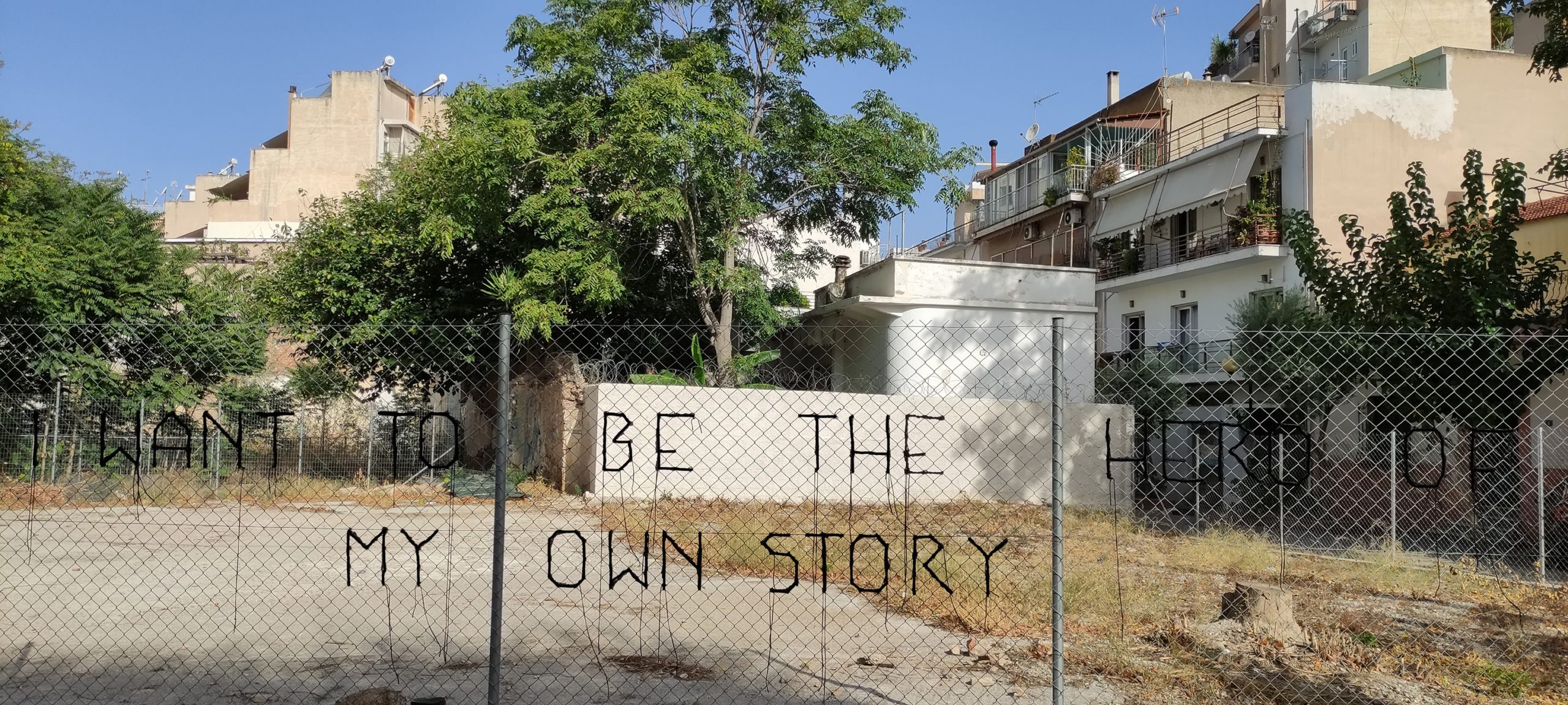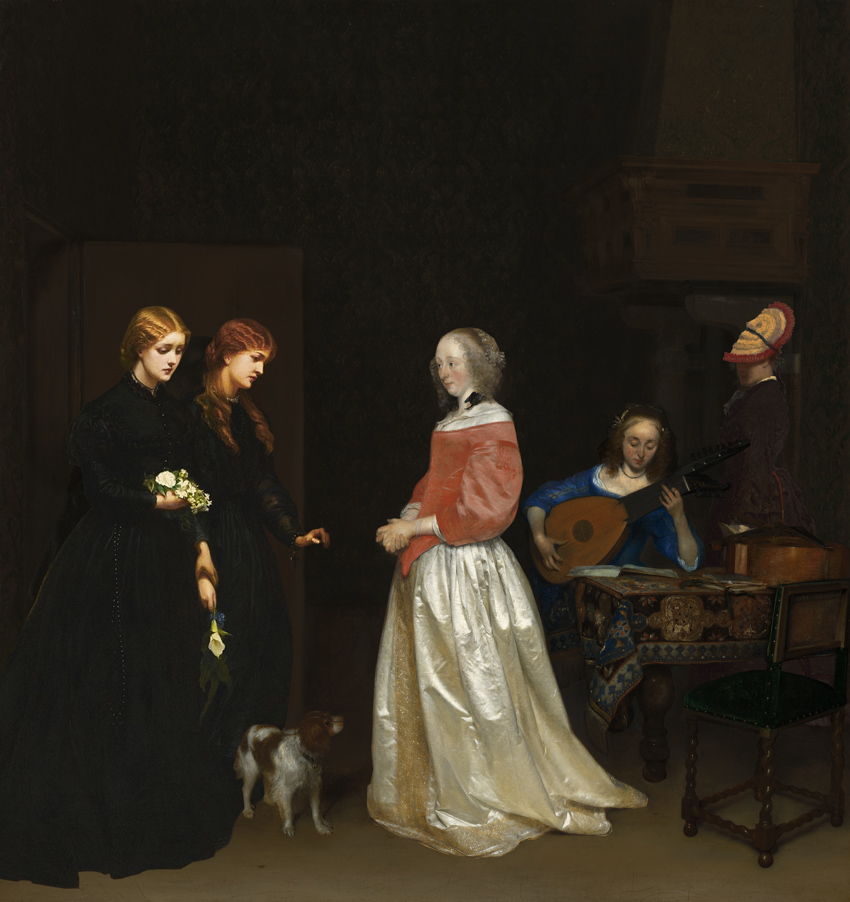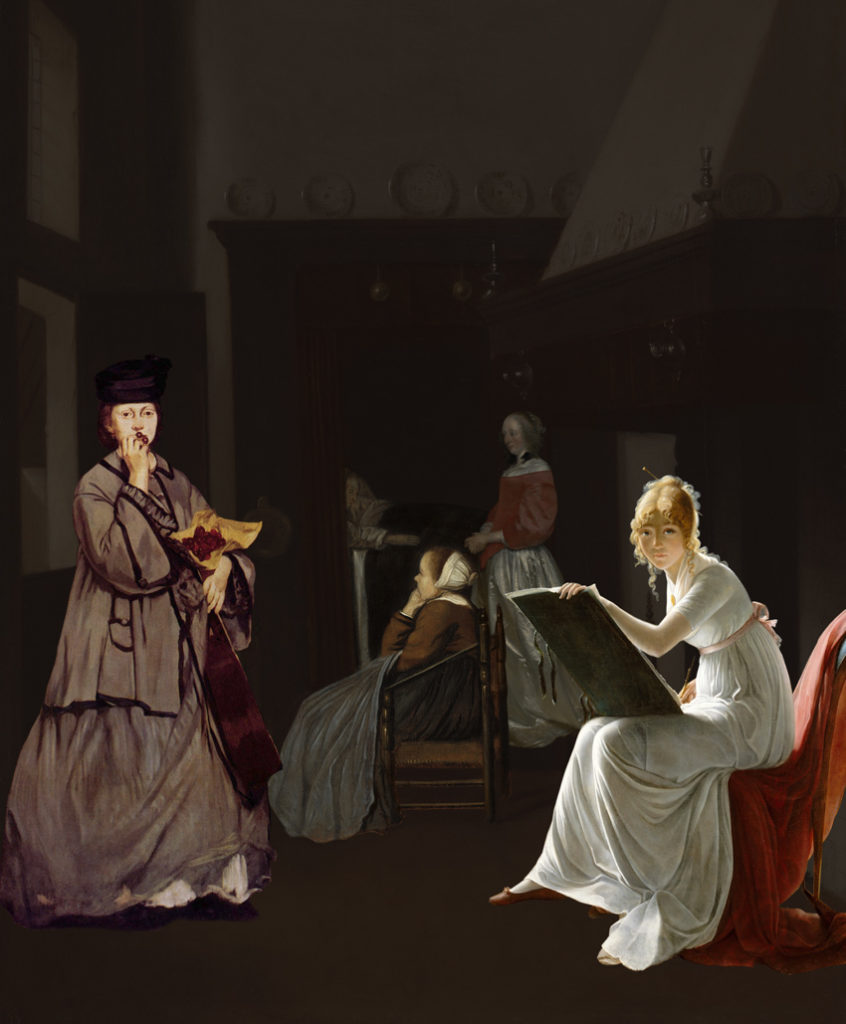I want to be the Hero of my own story
By Artemis Potamianou
A digital & site specific solo exhibition by Artemis Potamianou presented by Darling Pearls & Co (London) and IFAC Arts (Athens, NYC).
.Exhibition Dates : 2 October 2021 – 5 January 2022
From 5PM London, 7PM Athens, 12AM New York
Visits are online, right here & @https://www.artsy.net/partner/ifac-arts
Darling Pearls & Co presents “I want to be the Hero of my own story”, a site specific and digital solo exhibition by Artemis Potamianou hosted at Darling’s website & on Artsy, all in collaboration with IFAC Arts. As part of Darling’s art residencies programme, the show introduces Potamianou‘s two newest series: “Re-view the Unknown Masterpiece” & “Which side are you on? Fences”, as they progress through three months. It also displays her previous series, “The Unknown Masterpiece” and “Which side are you on? Cages” (2018). Her present bodies of work continue them respectively.
Potamianou‘s artworks group diversities of carefully selected samples in new compositions: characters and environments represented in seminal artworks and also actual life artefacts. This virtual and physical reorganisation of known references highlights, comments upon and subverts originally intended or otherwise acquired meanings and purposes of representations and/or objects. Their placement forms updated narratives as the knowledge we have about them (and this is different for every viewer) enters a dialogue with their new context in the present. Her multimedia practice re-frames the circumstances and agents responsible for producing and exhibiting art and offers critiques of gender politics within our milieux from the perspective of a female participant. It is also from this position that the artist examines other features of the art world and cultural treatments of women are discussed.
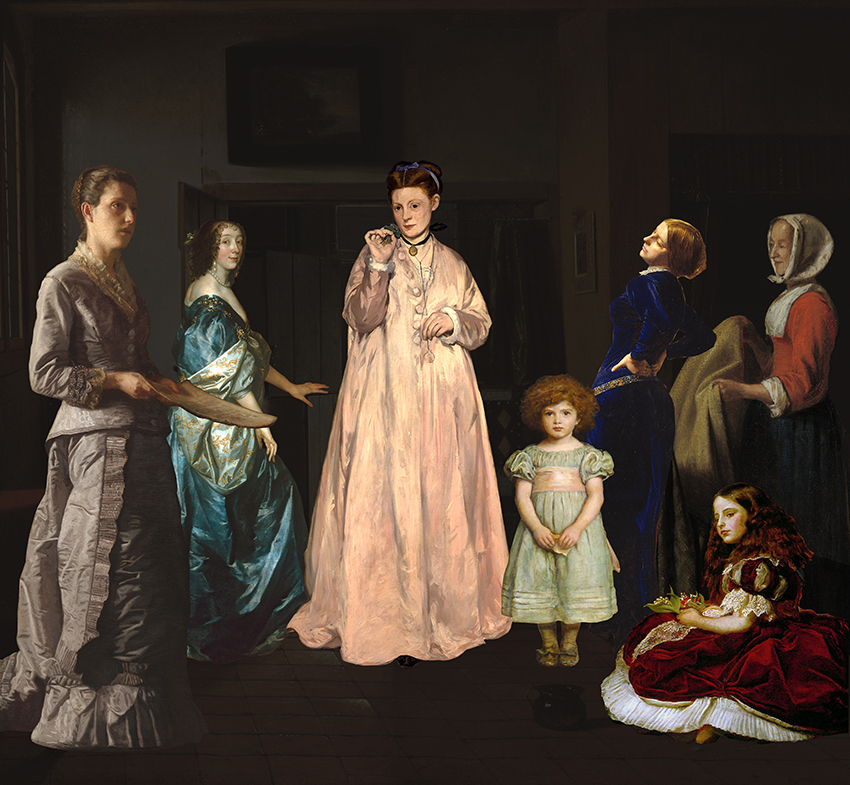
The exhibition title “I want to be the Hero of my own story” is also the name of the first piece from the series “Which side are you on? Fences”. The series features famous quotes, often found in memes and in out of context online discussions. Here they appear either cited or paraphrased, knitted with plastic yarn on metallic fences to reference such barriers in the urban landscape in Athens.
Artemis Potamianou, Which side are you on? Fence 2 (project, installation & detail), 2021
Both made on location and/or presented in art spaces, the fence’s mesh is transformed into a symbolic, ambiguous artistic substructure, hinting at the condition of protection and/or of enclosure and exclusion. The work comments on the uniqueness of human existence and focuses on one’s universal right to self-definition.
Looking into self-definitions is not new in the artist’s practice. The artwork “Art Scene – Art Seen” (2006-7), a video art installation composed of two synchronised projected videos, looks at relationships between the way that artists are defined in popular culture and the ways they define themselves. One of the videos is a collage collection of scenes where famous artists talk about their work, and the second is a collection of scenes from movies depicting artists at times of creation. This content examines representations of the lives and struggles of artists, their fear of failure, their continuous search for success, as well as the mechanisms and “backstage activities” practised in order to become established. The juxtaposition between the “real” image and its mediated cinematic representation offers a thoughtful comment on the myths associated with artists’ lifestyles. The unreal, stereotyped representations found in Hollywood movies encounter the ways artists themselves choose to promote their myths through the same stereotypes.
Artemis Potamianou, Re-view series: Barcelona Pavilion, 2011; Re-view series: Morning cleaning, 2011; Re-view series: Lonely Tweety, 2012
The new series “Re-view the Unknown Masterpiece” (2021) continues directly, as well as the previously mentioned series “The Unknown Masterpiece” (2018), the artist’s “Re-view series” (2006-2018) in which she explored the volatility of signs as she re-contextualised groups of characters and representations of art objects over images of art spaces. The new compositions invite the viewer to explore a fictional, uncanny world in which narratives are subjective and art is in constant re-negotiation.
In “The Unknown Masterpiece” (2018) famous portraits of women that have earned a place in art history for their virtuosity (in painting) are deconstructed and offer an initial “canvas” that is reconverted and recreated by pieces of portraits of famous men. The series is titled after Honoré de Balzac‘s book of the same name in which an encounter that includes fictional as well as real-life artists is described. In the story, fictional Maitre Frenhofer spends ten years “improving” a painting and ends up with an illegible composition. Also part of it are Porbus (based on real-life court painter Frans Pourbus), Nicolas Poussin and Gillette, the latter’s lover. The men’s roles in the story are remembered by art history, referenced in text books and in other artists’ biographies. Gillette, however, the exchange object and muse, is mostly forgotten. In Potamianou‘s pieces the men are rendered less recognisable instead of the women, it is a reverse spell / counter-dispositif that comments on their position in society and on the “male” roles they have to adopt to work in the arts in the present.
-
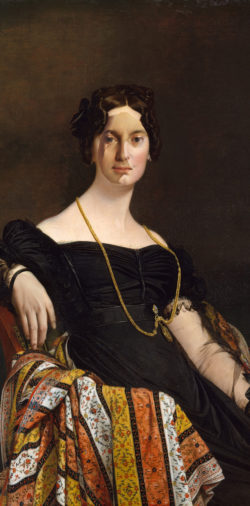
The Unknown Masterpiece: Madame Jacques-Louis Leblanc, 2018 | by Artemis Potamianou
-
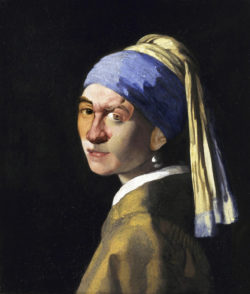
The Unknown Masterpiece: Girl with a Pearl Earring, 2018 | by Artemis Potamianou
-
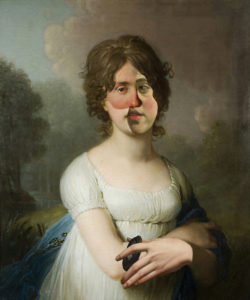
The Unknown Masterpiece: Ekaterina Gagarina, 2018 | by Artemis Potamianou
-

The Unknown Masterpiece: María Cristina de Borbon, 2018 | by Artemis Potamianou
-
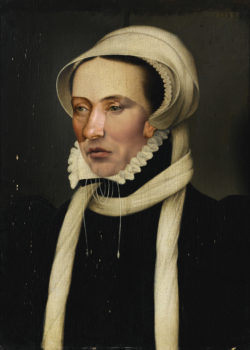
The Unknown Masterpiece: François Clouet Christina of Denmark, 2018 | by Artemis Potamianou
-
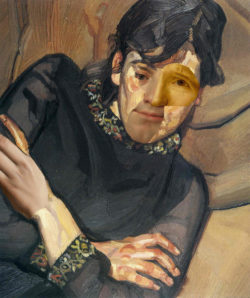
The Unknown Masterpiece: Bella, 2018 | by Artemis Potamianou
-
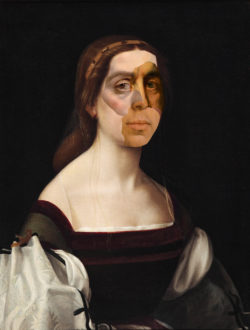
The Unknown Masterpiece: Portrait of a Lady, 2018 | by Artemis Potamianou
-
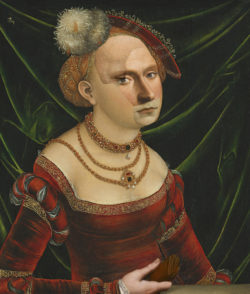
The Unknown Masterpiece: Portrait of a Woman, 2018 | by Artemis Potamianou
-
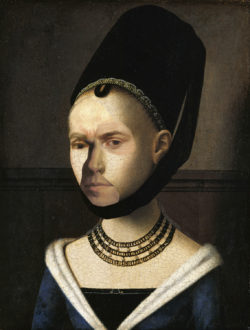
The Unknown Masterpiece: Portrait of a Young Woman, 2018 | by Artemis Potamianou
-
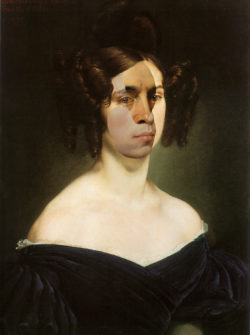
The Unknown Masterpiece: Portrait of Countess Luigia Douglas Scotti d’Adda, 2018 | by Artemis Potamianou
-

The Unknown Masterpiece: Portrait of Doña Isabel de Porcel, 2018 | by Artemis Potamianou
In “Re-view the Unknown Masterpiece”(2021), we are invited to observe an environment only of visually legible women, again sampled from historical paintings. Some of them appear more than once, suggesting continuity. This is the case of the girl in the red dress, originally from John Everett Millais’ “Leisure Hours” (1864). She appears both in “Re-view series: Barcelona Pavilion” (2011) and in “Re-view the Unknown Masterpiece 3” (2021). Whatever her location, she seems to refer to women strangely on display. Sample re-use also occurs within the series itself, as is the case of the girl popularly considered “mysteriously inviting” in Ter Borch’s “The Suitor’s Visit” (c. 1658), who appears twice in a diptych; once as a central figure and once in the background, talking to the nurse from Jacobus Vrel’s “Young Woman in an Interior” (c. 1660).
Two of the works in the series include images of Victorine Meurent, Manet’s favourite model, as represented by him: once as she appears in the painting “A Young Lady in 1866” and once as in “The Street Singer” (1862) posing as such because the actual street singer, possibly a courtesan according to the stories, refused to do so. The first painting is believed to be a re-reading of Corbet’s painting “Woman with a Parrot” (1866) which is more overtly sexual, also displays a bird,* and was exhibited at the same salon the previous year. Manet was, to an extent, remixing by using previous art to comment on contemporary matters as Potamianou does now. Her use of Manet‘s figure stands in between an homage and a continuation of art history in which a piece, seen as missing from the contemporary, is now included in it.
All samples come from paintings that portrayed their female subjects with an interest in their psychology and inner worlds as well as their social lives. Various characters as they appear within Potamianou’s compositions were depicted in the original works with pets: a parrot, two goldfish and a dog. While birds had clear sexual connotations, other animals were more generally used to symbolise women’s secrets, their private lives.
Differently from “The Unknown Masterpiece” (2018) series, however, not all original paintings within this series were made by men. The figure that appears to be writing in “Re-view The Unknown Masterpiece 2” is from a painting that was originally ascribed to Jacques-Louis David and is now believed to have been painted by the portraitist Marie Denise Villers. In “Re-view the Unknown Masterpiece 1”, the two widows from “For the Last Time” (1864) by Emily Mary Osborn, are being invited through the door in place of the suitor. In this new situation lesser known work by female artists is camouflaged within a new social gathering, as if escaping the male gaze and being given agency.
A similar reversal occurs in the series “Which side are you on? Cages” (2018) in which the artist “appropriates the male position of the curieux and infuses it with her own female substance”, as recently observed by art historian Bia Papadopoulou. This position is historically rooted in the cabinets of curiosities, associated with a gendered interest in science. Potamianou’s series is composed of a variety of wooden and thin metal cages, evoking those from Victorian times which mirrored the construction of houses. Birdless, here they instead house various items associated with the female world. Always also offering re-readings of an art history in which opinions are mostly male, the artist includes in one of her cages a Singer sewing machine that belonged to her grandmother alongside an umbrella wrapped in a blanket and nailed up. This is a humorous revisiting of the poet Isadore Ducasse’s famous line in Les Chants de Maldoror (1869): “Beautiful . . . as the accidental encounter, on a dissecting table, of a sewing machine and an umbrella”, a reference also made by Man Ray in his Dada object ‘The enigma of Isidore Ducasse’ (1920). While in Ray’s piece a sewing machine is wrapped in a blanket and tied up with string, in Potamianou’s work the machine is visible and the umbrella is restrained.
-
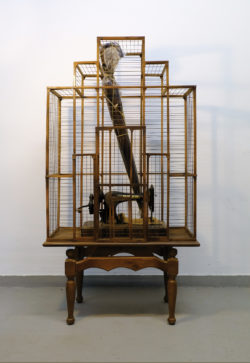
Which side are you on? Marriage, 2018 | by Artemis Potamianou
-
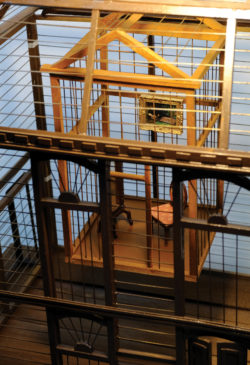
Which side are you on? Home, 2018 | by Artemis Potamianou
-
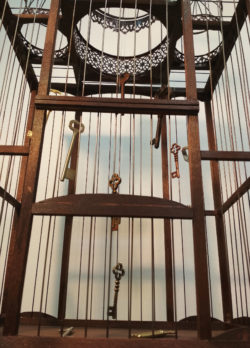
Which side are you on? Keys, 2018 | by Artemis Potamianou
-
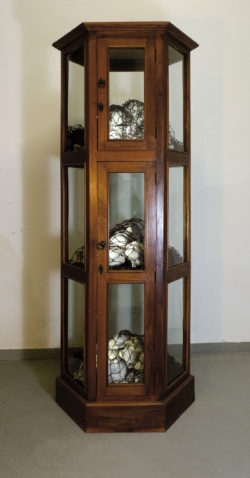
Which side are you on? Vanitas, 2018 | by Artemis Potamianou
-
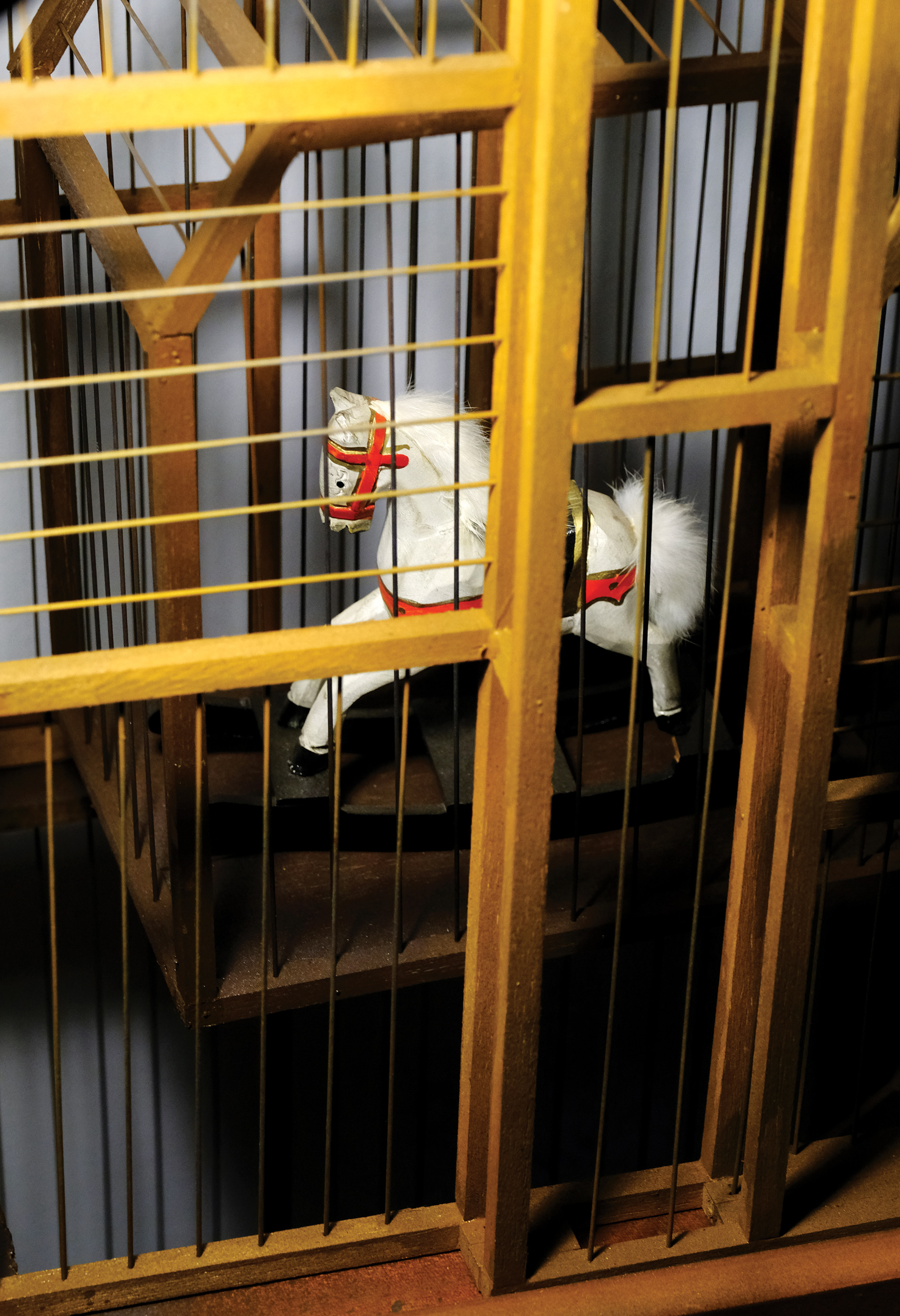
Which side are you on? Childhood, 2018 | by Artemis Potamianou
-
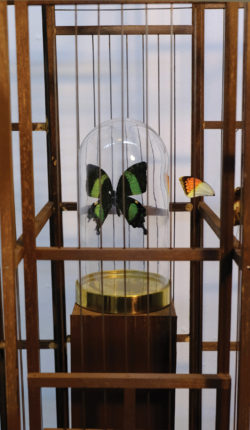
Which side are you on? Soul, 2018 | by Artemis Potamianou
-
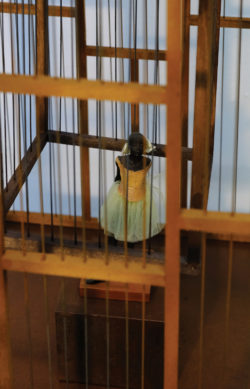
Which side are you on? Freedom, 2018 | by Artemis Potamianou
-
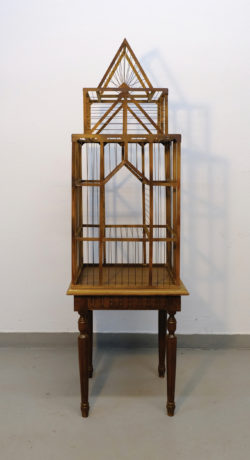
Which side are you on? Emptiness, 2018 | by Artemis Potamianou
-
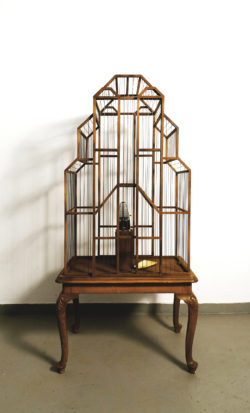
Which side are you on? Time, 2018 | by Artemis Potamianou
-
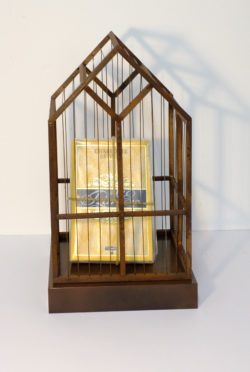
Which side are you on? Book, 2018 | by Artemis Potamianou
-
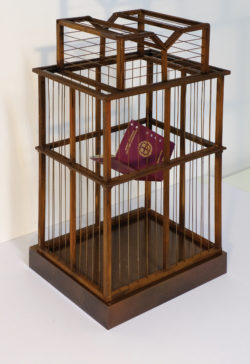
Which side are you on? Passport, 2018 | by Artemis Potamianou
-
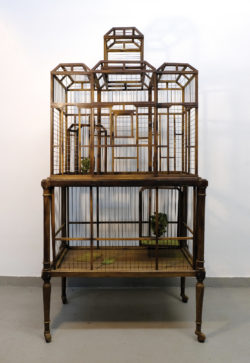
Which side are you on? Nature, 2018 | by Artemis Potamianou
* Sexual analogies between women and birds occur repeatedly in the history of art. In the seventeenth century birds and women were often so intimately related that the Dutch word vogelen, literally “to sell birds,” also meant “to copulate.”
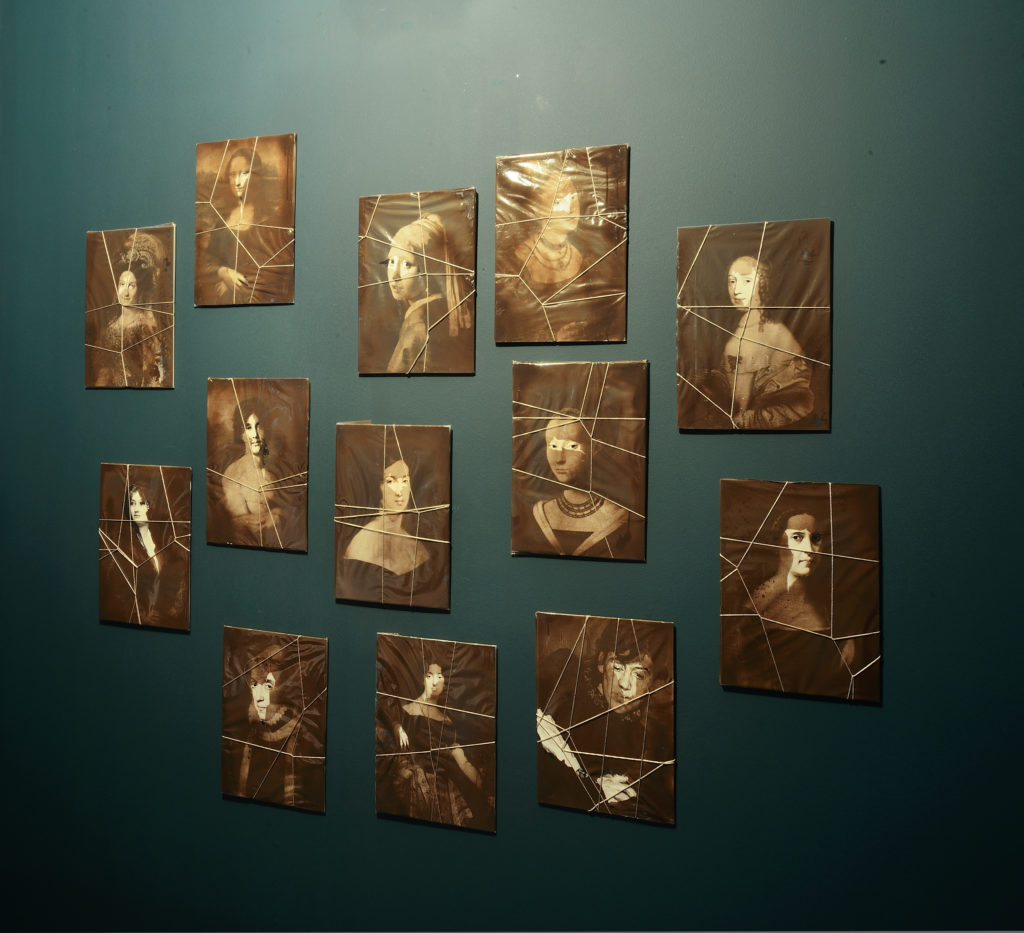
—————————————————-
Artemis Potamianou is an artist and curator living and working in Athens. Her work focuses on issues of perception. She explores the triptych artist, artwork and exhibition space, criticising standard curatorial practices and raising questions that defy the art system. In a constant dialogue with art history, she appropriates seminal works and deconstructs them only to reconstruct them again into a new reality. Her works feature familiar images in unfamiliar settings, absurd visual juxtapositions, and the simultaneous presence of different epochs in one story. Potamianou creates uncanny visual narratives – frequently to be experienced mentally and bodily – imbued with caustic political and feminist connotations.
Potamianou has had 25 solo exhibitions. Venues have included the Hellenic American Union (Athens), the Borough Museum and Art Gallery (Newcastle), the MAC (Midlands Art Center of Birmingham), Fizz Gallery (Athens), Tint Gallery (Thessaloniki) and Pleiades Gallery (Athens), amongst others.
She has participated in more than 130 group shows, at the 1st Biennale of Thessalonica, the BIDA – Biennale of Spain, the 3rd Athens Biennale, National Museum of Contemporary Art (Athens), State Museum of Contemporary Art (Thessaloniki), Vista Mare Foundation (Pescara), International Young Art 2002: Sotheby’s Amsterdam, Sotheby’s Tel Aviv, Sotheby’s Moscow, Change and Partner Contemporary Art (Rome), «Greek Sale»- Bonhams (London), The Benaki Museum (Athens), Biennale Internazionale Dell’ Arte Contemporanea (Florence), Open 15 – International Exhibition (Venice), Tensta Kulturhus-Tensta house of culture (Stockholm), etc. Potamianou completed her BA(FA) at the School of Fine Art (Athens) in 1997 and has subsequently received an MA degree from Staffordshire University (1999).
She has curated more than 60 exhibitions by influential artists of international relevance such as Joseph Kosuth, Damien Hirst, Joseph Beuys, Terry Atkinson, Peter Greenaway, Candice Brietz, Guerrilla Girls, etc.
Potamianou is also the founder and Director of Platforms Project – Independent Art Fair, the presenter and producer of Art Therapy, a radio talk show about visual art at Beton7 radio, since 2011, and the Editor in chief of visual arts for GRA Review (a magazine of architecture and design) since 2010. Potamianou is on the board and has been the Treasurer of AICA HELLAS (International Association of Art Critics) since 2015. Potamianou has written essays for exhibition catalogues and books.
– https://www.artemispotamianou.com/
